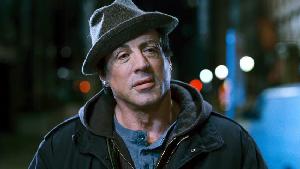 Rocky Balboa (Sylvester Stallone, 2006)
Rocky Balboa (Sylvester Stallone, 2006)
Sylvester Stallone’s new Rocky movie, Rocky Balboa, is an experiment in the power of sentiment. To what extent can our years of association with a character transform our experience of a movie? Can a major motion picture get by on nostalgia alone? The answer, in this case, is that yes, it can.
The original Rocky was a fairy-tale, but it was a gritty one, set in a run-down, semi-deserted Philadelphia. Like a lot of late-seventies proto-blockbusters, it paired the simple genre narrative that would define eighties blockbuster filmmaking with the realist edge of seventies New Hollywood; in doing so it got the best of both worlds. So while the story is pure fluff, the film was built on solid elements such as the performances of Stallone and his costars, and the character of its Philadelphia locations. After the founding film the series fell apart in small increments, with each instalment becoming more cartoonish, overwhelming the simple dignity of the title character. By Rocky IV, as Stallone faced off in a symbolic cold-war bout between America and Russia, the series was a joke.

